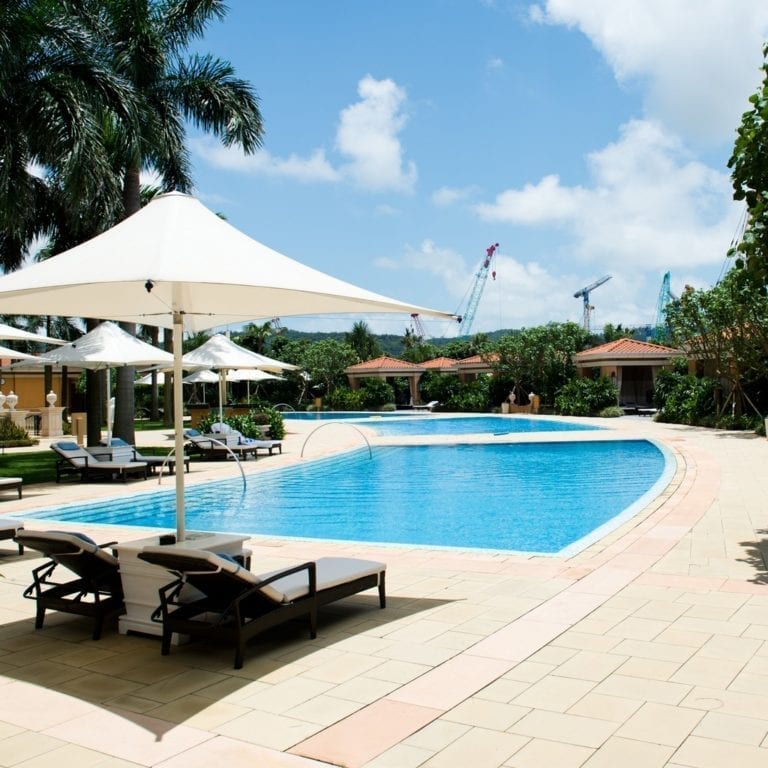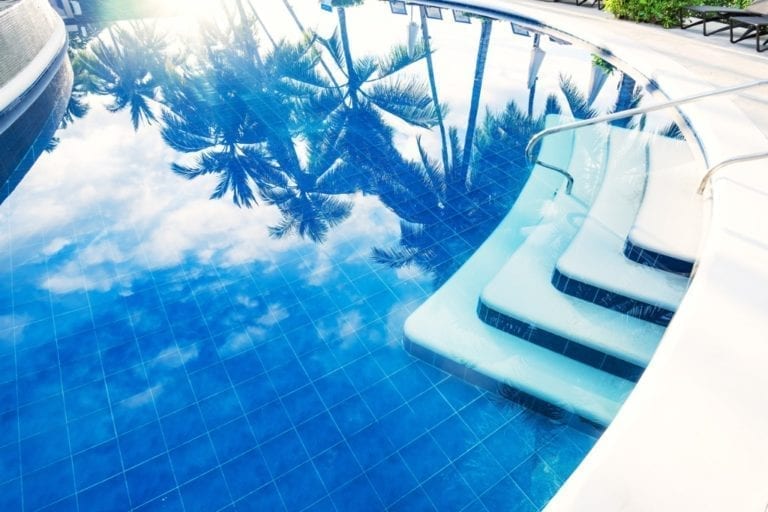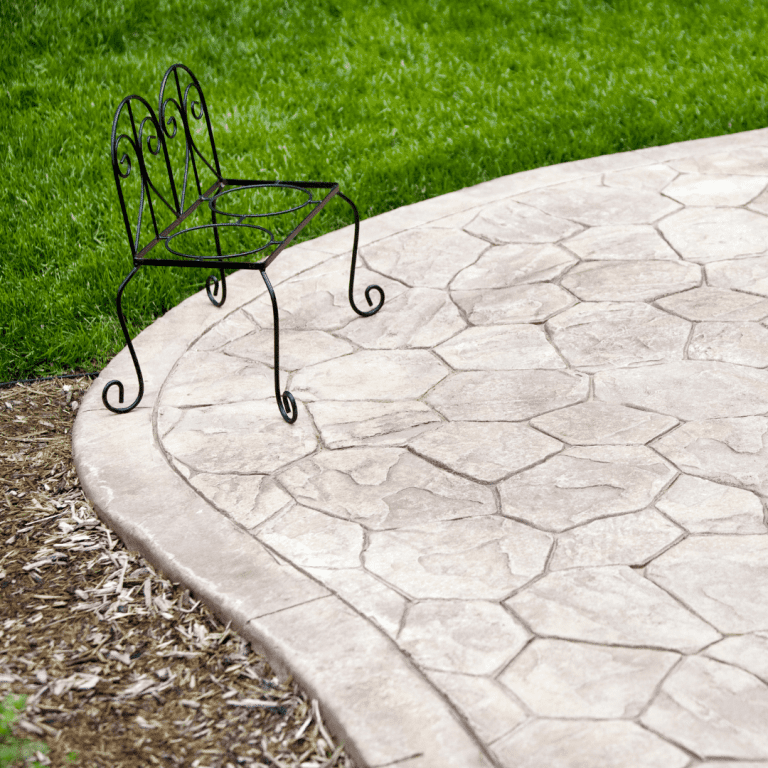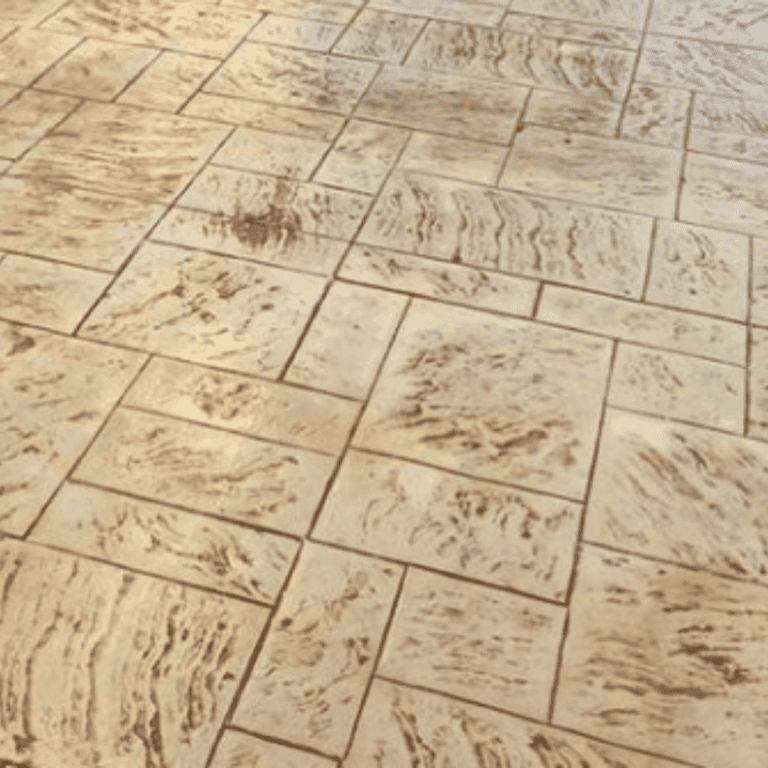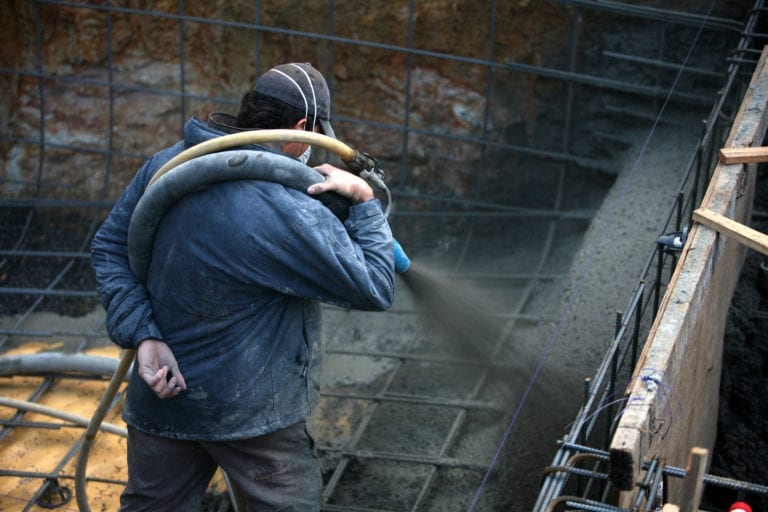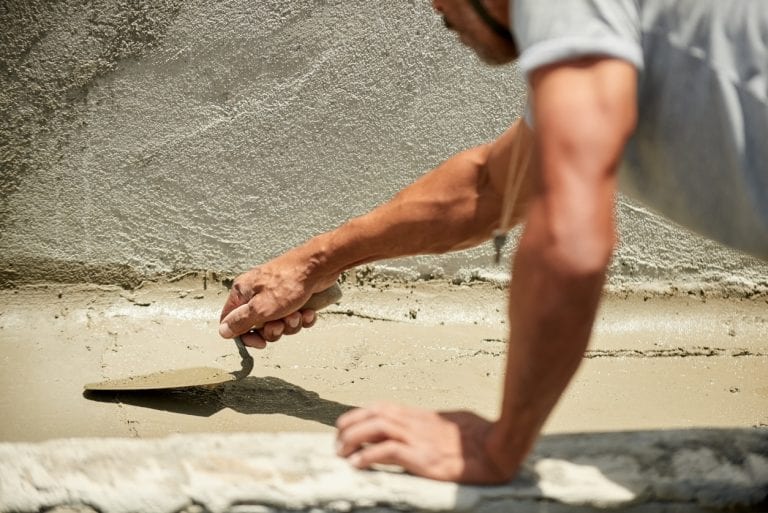Pool plastering is an important part of maintaining your swimming pool. It not only enhances the aesthetic appeal of your pool but also creates a watertight seal. Hiring professionals for pool plastering services is highly recommended due to the complexities involved in the process. AAA Pool Maintenance, with over 50 years of expertise in pool and spa maintenance and repairs, offers reliable pool plastering services in Camarillo and Ventura County. The process includes draining the pool, chipping out the old plaster, applying new plaster, and balancing the chemical composition of the water.
Key Takeaways:
- Pool plastering is essential for maintaining the integrity of your swimming pool.
- Hiring professionals for pool plastering services is recommended due to the complexities involved.
- AAA Pool Maintenance has over 50 years of expertise in pool and spa maintenance and repairs.
- The pool plastering process includes draining the pool, chipping out old plaster, applying new plaster, and balancing the chemical composition of the water.
- Proper maintenance and care are crucial for the longevity and visual appeal of pool plaster.
Importance of Pool Plastering
Pool plastering is a vital aspect of maintaining your swimming pool. It not only enhances the overall appearance of your pool but also serves as a protective layer that ensures the integrity and longevity of the pool structure. By creating a watertight seal, pool plastering prevents leaks and preserves the functionality of the pool.
In addition to its practical benefits, pool plastering also adds aesthetic value to your swimming pool. The smooth and visually appealing surface of the plaster provides a comfortable swimming experience for you and your guests. Whether you’re relaxing in the pool or hosting a poolside gathering, the quality of the pool plaster contributes to the overall enjoyment of your swimming pool.
To ensure the best results, it is highly recommended to hire professionals, such as AAA Pool Maintenance, for pool plastering services. With over 50 years of expertise in pool maintenance and repairs, they have the knowledge and experience to deliver exceptional results. Their team will efficiently handle the entire pool plastering process, from draining the pool to applying new plaster and balancing the chemical composition of the water.
| Benefits of Pool Plastering |
|---|
| Enhances the aesthetic appeal of the pool |
| Creates a watertight seal to prevent leaks |
| Preserves the longevity of the pool structure |
| Provides a smooth and comfortable surface for swimmers |
| Contributes to the overall enjoyment of the pool |
Take Care of Your Pool Plaster for Longevity
Proper maintenance and care of your pool plaster are essential for its long-term performance. Regular cleaning, brushing, and monitoring of the water chemistry help prevent stains, calcium deposits, and other issues that may arise. Additionally, it is crucial to follow the recommended start-up procedure and seek professional assistance when needed to ensure the optimal care of your pool plaster.
By investing in professional pool maintenance services and practicing a proactive approach to pool care, you can enjoy a beautiful and well-maintained pool for years to come.

The Pool Plastering Process
When it comes to pool plastering, understanding the process is crucial for a successful outcome. AAA Pool Maintenance, with over 50 years of expertise in pool and spa maintenance, construction, and repairs in Camarillo and Ventura County, is here to guide you through the steps involved.
Step 1: Draining and Assessment
The first step in the pool plastering process is to drain the pool completely. This allows for a thorough assessment of the existing plaster condition. Any areas of damage, cracks, or rough spots are identified during this stage.
Step 2: Removing Old Plaster
Once the pool is drained, the old plaster is carefully chipped out to make way for the new plaster. This process ensures a smooth and even surface for the application of new plaster. It also helps to eliminate any potential issues that could affect the durability of the new plaster.
Step 3: Application of New Plaster
After the old plaster is removed, the new plaster is applied to the pool surface. Depending on your design preferences, this is also the stage where tile and coping may be added. The application process can take a day or two, depending on the chosen material and the size of the pool.
Step 4: Balancing the Chemical Composition
Once the new plaster is in place, the pool is refilled with water, and the chemical composition is balanced. This step is crucial for maintaining the longevity of the new pool plaster. Proper chemical balance helps to prevent issues such as pH imbalances, scaling, and staining that could affect the overall appearance and durability of the plaster.
With AAA Pool Maintenance’s expert guidance and attention to detail, you can count on a seamless pool plastering process that will leave your pool looking beautiful and well-maintained for years to come.
Water and Pool Plaster
Proper maintenance of your pool plaster includes ensuring the quality of the pool water. The pH level of the water plays a crucial role in preserving the integrity of the plaster. Avoiding water with a pH below 7.0 is essential, as it can erode the plaster. Similarly, a pH above 8.0 can lead to staining and scaling on the plaster surface. Regular testing of the water’s chemical composition and making necessary adjustments is vital to maintain the longevity of your pool plaster.
In addition to pH levels, the concentration of calcium in the water should be monitored. Excessive calcium can result in deposits on the plaster, while insufficient calcium may weaken the plaster’s structure. Regular water testing and chemical adjustments are necessary to ensure the quality of the pool water and prevent any adverse effects on the plaster.
AAA Pool Maintenance, with over 50 years of experience in pool and spa maintenance, construction, and repairs in Camarillo and Ventura County, understands the importance of proper water maintenance for the longevity and performance of pool plaster. Our team of experts can provide professional guidance on water testing, chemical balance, and overall pool maintenance to help you maintain the quality of your pool plaster.
| Water Maintenance Tips for Pool Plaster |
|---|
| Maintain the pH level between 7.2 and 7.6 to prevent erosion or scaling. |
| Regularly test the water for calcium concentration and adjust as needed. |
| Use high-quality pool chemicals and follow the recommended dosage for balancing the water chemistry. |
| Consider using a pool water stabilizer to prevent rapid changes in pH levels. |
| Monitor and clean the pool filters regularly to maintain optimal water circulation and filtration. |
Common Stains on Pool Plaster
Pool plaster can develop various stains over time, which can detract from the overall appearance of your pool. Understanding the causes of these stains and how to prevent them is essential for maintaining the beauty of your pool plaster.
Organic stains: Organic stains are common and are typically caused by plant matter, such as leaves and twigs, that make their way into the pool. These stains can be easily bleached by chlorine. Regular skimming and cleaning of your pool can help prevent organic stains from occurring.
Pool plaster mottling: Pool plaster mottling refers to variations of color that can occur on the surface of the plaster. Factors such as the troweling process and hydration can contribute to this phenomenon. While mottling is a natural occurrence and doesn’t affect the functionality of the pool, regular maintenance and water balancing can help minimize its appearance.
Metal stains: Metal stains can be caused by metals such as copper and iron that saturate the water. These stains can be difficult to remove and may require professional intervention. Regular water testing and the use of metal sequestrants can help prevent metal stains from occurring.
| Types of Stains | Causes | Prevention |
|---|---|---|
| Organic stains | Plant matter in the pool | Regular skimming and cleaning |
| Pool plaster mottling | Troweling process and hydration | Regular maintenance and water balancing |
| Metal stains | Metals saturating the water | Water testing and use of metal sequestrants |
Expert Tip:
Regular maintenance, including brushing the pool walls and floors, monitoring the water chemistry, and addressing any issues promptly, can help prevent and minimize stains on your pool plaster. Seeking professional assistance for stain removal and regular pool service can also contribute to the longevity and overall appearance of your pool plaster.
Cleaning Pool Plaster
Maintaining clean and well-maintained pool plaster is essential for the overall appearance and longevity of your swimming pool. Regular cleaning not only keeps the plaster looking its best but also helps to prevent the build-up of dirt, algae, and other debris that can potentially damage the surface. Here are some important tips and techniques for effectively cleaning pool plaster:
1. Skim and Brush Regularly:
Skimming the surface of the pool to remove floating debris, such as leaves and insects, is the first step in keeping the plaster clean. Additionally, regular brushing of the walls and floor helps to remove any dirt or algae that may have settled. Use a pool brush with nylon bristles and make sure to brush all areas of the pool thoroughly for optimal cleaning.
2. Test and Balance Chemical Levels:
Proper water chemistry is crucial for maintaining clean pool plaster. Regularly test the pH, alkalinity, and sanitizer levels of the water and make any necessary adjustments to ensure proper balance. Balanced water helps to prevent the growth of algae and the formation of stains on the plaster surface.
3. Use Pool Stain Removers:
If your pool plaster develops stains, there are various pool stain removers available on the market that can help to remove them. Follow the instructions on the product label and apply the stain remover directly to the affected areas. Use a brush to gently scrub the stain and then rinse thoroughly. It’s important to choose a stain remover that is compatible with your pool plaster type.
| Pool Plaster Cleaning Tips | |
|---|---|
| Skim the pool surface regularly to remove debris | ✔ |
| Skim the pool surface regularly to remove debris. | ✔ |
| Test and balance water chemistry. | ✔ |
| Brush the pool walls and floor regularly. | ✔ |
“Regular cleaning and maintenance of your pool plaster will keep it looking beautiful and extend its lifespan. Remember, a clean pool is a happy pool!”
By following these cleaning tips and techniques, you can ensure that your pool plaster remains clean, smooth, and visually appealing for years to come. Regular cleaning, testing, and maintenance not only enhance the aesthetics of your pool but also contribute to the overall enjoyment and safety of your swimming experience. For professional pool maintenance and cleaning services, contact AAA Pool Maintenance with over 50 years of expertise in pool and spa maintenance, construction, and repairs.
Filling Your Pool and Start-Up Procedure
Once the pool plastering process is complete, it’s time to fill your pool and initiate the start-up procedure. This step is crucial to ensure the proper care and maintenance of your pool plaster, as well as the overall functionality of your pool. Here’s a step-by-step guide to help you through the process:
Step 1: Filling Your Pool
When filling your pool for the first time, it’s important to follow the correct procedures to prevent any damage to the freshly plastered surface. Start by diffusing the water flow to minimize any impact on the plaster. Avoid using soft water, as its low mineral content can cause the plaster to dissolve. Instead, use regular tap water to fill your pool.
Step 2: Start-Up Procedure
Once your pool is filled, it’s time to initiate the start-up procedure. This involves balancing the pH, alkalinity, and hardness levels of the water. Testing kits are available to help you determine the appropriate chemical adjustments. Additionally, make sure to brush the pool interior several times a day to remove any plaster dust and promote a clear and sparkling pool.
During the start-up phase, it’s important to treat the water and maintain the proper chemical balance chemically. Regular monitoring of the water chemistry and adjustments as needed will help ensure the longevity and beauty of your pool plaster.
“Proper filling and start-up procedures are essential to protect the integrity of your pool plaster and maintain its longevity.”
| Step | Action |
|---|---|
| 1 | Diffuse the water flow while filling the pool |
| 2 | Use regular tap water instead of soft water |
| 3 | Balance the pH, alkalinity, and hardness levels of the water |
| 4 | Regularly brush the pool interior to remove plaster dust |
| 5 | Chemically treat the water and maintain the proper chemical balance |
Following these steps will ensure that your pool plaster is well-cared for and that you can enjoy a beautifully maintained pool for years to come.
Preventative Maintenance for Pool Plaster
Proper and regular preventative maintenance is crucial for the care and longevity of your pool plaster. By following a few simple steps, you can ensure that your pool plaster remains in excellent condition for years to come.
Regular Brushing and Cleaning
One of the most important aspects of preventative maintenance is regular brushing and cleaning of the pool plaster. This helps to remove any debris or dirt that may accumulate on the surface, keeping it smooth and clean. Use a pool brush with stiff bristles to scrub the walls and floor of the pool, paying special attention to areas that are prone to staining or buildup.
Proper Water Chemistry
Maintaining the proper chemical balance of the pool water is essential for the health of your pool plaster. Regularly test and adjust the pH, alkalinity, and disinfectant levels to ensure they are within the recommended ranges. Imbalanced water chemistry can lead to scaling or corrosive conditions, which can damage the plaster over time.
Stain Prevention
Using stain preventives can help minimize the staining effects of minerals in the water. These products work by sequestering metals and preventing them from depositing on the plaster surface. Additionally, keeping the pool water properly filtered and balanced can help prevent stains and reduce the need for extensive cleaning or resurfacing.
Professional Maintenance
While regular preventative maintenance can go a long way in preserving your pool plaster, it’s also important to schedule professional maintenance as needed. A professional pool maintenance service, like AAA Pool Maintenance, can provide expert care, including thorough cleaning, water testing, and any necessary repairs or resurfacing. Their 50+ years of expertise in pool and spa maintenance in Camarillo and Ventura County make them a reliable choice for keeping your pool plaster in top shape.
| Preventative Maintenance Tips for Pool Plaster |
|---|
| Regularly brush the pool plaster to keep it clean and free of debris |
| Maintain proper water chemistry by testing and adjusting pH, alkalinity, and disinfectant levels |
| Use stain preventives to minimize the effects of minerals and metals in the water |
| Schedule professional maintenance with AAA Pool Maintenance for expert care and repairs |
Characteristics of Pool Plaster
Pool plaster has distinct characteristics that contribute to its functionality and aesthetic appeal. Understanding these characteristics can help you better maintain and care for your pool plaster to ensure its longevity. Here are some key attributes of pool plaster:
- Texture: Pool plaster has an “eggshell” texture that provides a smooth surface for swimmers while maintaining slip resistance underwater. This texture enhances the overall swimming experience and promotes safety.
- Hand-troweled Imperfections: Due to the hand-troweling process, minor cosmetic imperfections may be present on the plaster surface. These imperfections, such as slight variations in color or texture, are normal and do not affect the pool’s functionality.
- Blotchy or Streaked Appearance: The irregular nature of plaster cement can result in a blotchy or streaked appearance on the surface. This characteristic is also considered normal and does not impact the pool’s performance.
- Checks: Small cracks, known as checks, are common in plastered pools. These cracks are typically shallow and do not pose any structural concerns. They are the result of the natural curing process and do not affect the durability of the plaster.
Pool Plaster Maintenance Tips
Maintaining the characteristics of pool plaster is essential for its long-term performance. Here are a few maintenance tips to consider:
- Regularly brush the plaster surface to remove debris and prevent staining.
- Monitor and maintain the proper chemical balance of the pool water to prevent scaling and corrosive conditions.
- Perform regular water testing to ensure the pH level and calcium concentration are within the recommended range.
- Utilize stain preventives to minimize the effects of dissolved minerals in the water.
- Ensure proper filtration and regular pool treatment to maintain cleanliness.
Following these maintenance tips and periodically seeking professional assistance will help you keep your pool plaster in optimal condition, ensuring a beautiful and enjoyable swimming experience.
| Characteristics | Details |
|---|---|
| Texture | “Eggshell” texture, smooth yet slip-resistant underwater. |
| Hand-troweled Imperfections | Minor cosmetic imperfections due to the hand-troweling process. |
| Blotchy or Streaked Appearance | Irregularity in plaster cement can result in a blotchy or streaked surface. |
| Checks | Small cracks, known as checks, are common and do not affect functionality. |
Stain and Calcium Deposit Removal
Keeping your pool plaster-free from stains and calcium deposits is crucial for maintaining its pristine condition. If you notice any stains or deposits on the plaster surface, it is important to take action to remove them promptly. AAA Pool Maintenance, with over 50 years of expertise in pool and spa maintenance, construction, and repairs in Camarillo and Ventura County, can provide professional assistance in stain and calcium deposit removal.
One effective method for removing stains is through a process called acid washing. Acid washing involves briefly draining the pool and applying a diluted acid solution to the stained areas. This helps restore the white finish and smoothness of the plaster. However, acid washing should be done with caution as it can be abrasive and should only be performed by trained professionals to avoid damaging the plaster.
In some cases, sanding the plaster surface may be necessary to remove stubborn stains or deposits. This involves using specialized equipment to gently sand the stains away, revealing the clean surface underneath. Professionals should also do sanding to ensure proper technique and avoid any damage to the plaster.
Stain and Calcium Deposit Removal
To prevent the occurrence of stains and calcium deposits, regular pool maintenance is essential. Properly balanced water chemistry, including pH levels and calcium concentration, helps minimize the risk of staining. Regular brushing of the pool walls and floor, along with routine water testing, can also help prevent and address any potential issues before they become more severe.
By following these maintenance practices and seeking professional assistance when needed, you can keep your pool plaster in excellent condition and enjoy a beautiful and inviting swimming pool all year round.
| Stain Removal Methods | Benefits |
|---|---|
| Acid Washing | – Effectively removes stains – Restores the white finish – Smoothens the plaster surface |
| Sanding | – Removes stubborn stains and deposits – Reveals a clean surface – Improves the overall appearance of the pool |
Importance of Professional Pool Maintenance Service
When it comes to maintaining the quality and longevity of your pool plaster, professional pool maintenance service is of utmost importance. The experts at AAA Pool Maintenance, with over 50 years of expertise in pool and spa maintenance, construction, and repairs in Camarillo and Ventura County, understand the complexities involved in pool care. By entrusting your pool to a professional service, you can ensure that it receives the care it needs to stay in pristine condition for years to come.
Professional pool maintenance service provides a range of benefits for your pool plaster care. Trained and licensed service professionals have the knowledge and experience to maintain the chemical balance of your pool water, preventing issues such as staining and scaling that can impact the appearance and lifespan of your plaster.
In addition to chemical maintenance, professional pool maintenance includes regularly brushing the pool surface. This helps to remove debris and prevent the buildup of stains on the plaster. The professionals at AAA Pool Maintenance also have the expertise to identify any issues with your pool plaster or water chemistry and provide prompt repairs or adjustments to ensure the optimal performance of your pool.
Why Choose Professional Pool Maintenance Service
While regular professional pool maintenance service is essential, pool owners also play a vital role in pool care. By regularly skimming debris, maintaining proper chemical balance between professional visits, and promptly contacting professionals for any concerns or problems, you can contribute to the overall care of your pool plaster.
By combining the expertise of pool service professionals with your own efforts, you can ensure that your pool plaster remains in excellent condition. With professional pool maintenance service, you can enjoy a beautiful and well-maintained pool that provides years of enjoyment for you and your family.
| Benefits of Professional Pool Maintenance Service |
|---|
| Expertise in maintaining chemical balance |
| Regular brushing to prevent stains |
| Prompt repairs and adjustments |
| Combined efforts between professionals and pool owners |
Conclusion
Proper maintenance and care are crucial for the longevity and aesthetic appeal of your pool plaster. By following a regular cleaning routine and testing the water chemistry, you can minimize stains, calcium deposits, and other issues that may arise. Additionally, preventative measures such as brushing and skimming debris play a significant role in maintaining the smooth and debris-free surface of your pool plaster.
The pool plastering process can be complex, which is why it is recommended to hire professionals like AAA Pool Maintenance. With over 50 years of expertise in pool and spa maintenance, construction, and repairs in Camarillo and Ventura County, you can trust their reliable pool plastering services to ensure your pool remains in top condition.
Remember, the start-up procedure is essential after filling your pool for the first time. By balancing the pH, alkalinity, and hardness levels of the water, as well as regularly brushing the pool interior, you can promote a clear and sparkling pool. It is also important to maintain the proper chemical balance and seek professional assistance whenever needed to ensure the optimal performance of your pool plaster.
With the right maintenance practices and periodic professional service, your pool plaster can provide many years of enjoyment and trouble-free use. For all your pool plaster care, maintenance, and plastering needs, contact AAA Pool Maintenance at (805) 987-0975. Trust the experts to keep your pool in pristine condition.
FAQ
Why is pool plastering important?
Pool plastering is important because it enhances the aesthetic appeal of your pool, creates a watertight seal, and helps maintain the integrity of the pool structure.
Why should I hire professionals for pool plastering services?
Hiring professionals for pool plastering services is recommended due to the complexities involved in the process and the need for expertise in achieving the desired results.
What is involved in the pool plastering process?
The pool plastering process includes draining the pool, chipping out the old plaster, applying new plaster, and balancing the chemical composition of the water.
How often should I maintain my pool plaster?
Regular pool maintenance, including pool plaster repair and resurfacing, is necessary to keep the pool in top condition. The frequency of maintenance depends on factors like usage and weather conditions.
How can I maintain the chemical balance of the pool water?
Regular water testing and chemical adjustments are necessary to maintain the quality of the pool plaster. Monitoring the pH level and calcium concentration is particularly important.
What are the common stains that can occur on pool plaster?
Common stains on pool plaster include organic stains caused by plant matter, pool plaster mottling, and metal stains caused by metals saturating the water.
How should I clean my pool plaster?
Regular cleaning involves skimming the surface to remove debris, brushing the plaster walls and floor, and maintaining proper filtration and water treatment.
What is the start-up procedure for a newly filled pool?
The start-up procedure involves diffusing water to prevent damage to the plaster, balancing the pH, alkalinity, and hardness levels of the water, and regularly brushing the pool interior.
How can I prevent stains and calcium deposits on pool plaster?
Regular monitoring of chemical balances, maintaining proper pH levels, and using stain preventives can help prevent stains and calcium deposits on pool plaster.
What are the characteristics of pool plaster?
Pool plaster has an “eggshell” texture, minor cosmetic imperfections, and small cracks called checks, which are normal and do not affect the pool’s functionality.
How can I remove stains or calcium deposits from pool plaster?
Professional intervention may be required for the removal of stains or calcium deposits. Draining, acid washing, or sanding the plaster can restore its appearance.
Why is professional pool maintenance service important?
Professional pool maintenance service ensures proper care and longevity of your pool plaster. Trained professionals can maintain chemical balance and address issues with the plaster and water chemistry.


